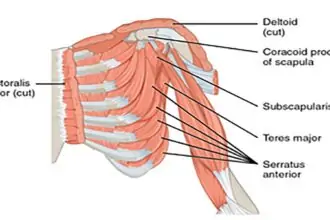
Searching for the ideal canine companion can often lead you down a path of breed stereotypes and misconceptions. One of the most misunderstood breeds is the gentle yet courageous dachshund. Despite their popularity, the provocative claim perpetuates a long-held belief: why dachshunds are the worst breed. But what is the truth of this bold statement? So Let’s see top 5 reason!
Why Dachshunds Are The Worst Breed?
Dachshunds, fondly nicknamed “wiener dogs” or “sausage dogs,” stand out as a cherished breed of small hounds, celebrated for their elongated bodies and short legs.
These captivating companions boast a storied past and have garnered widespread affection as household favorites, thanks to their distinctive looks and lively temperaments.
Renowned for their hunting lineage, adaptability, and unwavering loyalty, Dachshunds showcase their versatility. Moreover, they sport three distinct coat varieties: smooth, long-haired, and wire-haired. All information are collect from Raddit & Medium
Top 5 Reason Why Dachshunds Are The Worst Breed?
- Health Issues
- Dachshunds’ Back Issues
- Dachshunds’ Dental Issues
- Training Difficulties
- Child Friendly
1. Health Issues
One significant consideration when it comes to Dachshunds is their predisposition to a range of health conditions. Their elongated bodies put them at risk for back problems, notably intervertebral disc disease, which can result in paralysis or mobility challenges, necessitating continuous medical care and possibly expensive interventions.
Additionally, Dachshunds are susceptible to various eye issues, allergies, and dental problems due to their petite stature and distinctive physique.
2. Dachshunds’ Back Issues
Dachshunds possess a distinctive feature in their elongated spine, rendering them particularly susceptible to back issues, notably intervertebral disc disease (IVDD). This condition arises when the discs between the vertebrae sustain damage, leading to compression of the spinal cord. IVDD manifests with severe pain, weakness, paralysis, and, in severe cases, fatalities. Trauma, aging, genetics, and obesity are common triggers, with Dachshunds being 10 times more prone to IVDD than other breeds.
Preventing IVDD entails several proactive steps. Maintaining your Dachshund at a healthy weight is crucial, as is avoiding activities that strain their spine, such as jumping on and off furniture or stairs. Providing a supportive bed and limiting high-impact exercises are also vital measures.
Be vigilant for signs of back pain, including reluctance to move, shivering, an arched back, crying, or hind leg dragging. Promptly consult a veterinarian if any symptoms arise. Treatment options range from pain relief medication and anti-inflammatory drugs to surgery, depending on the severity. Some Dachshunds may require assistance devices like wheelchairs or carts to aid mobility.
3. Dachshunds’ Dental Issues
Dental issues are prevalent among Dachshunds, primarily due to their small mouths and crowded teeth, rendering them more susceptible to plaque, tartar, gingivitis, and periodontal disease. These conditions not only lead to bad breath, tooth loss, infection, and discomfort but can also impact other organs like the heart, liver, and kidneys if bacteria enter the bloodstream.
Preventing dental disease requires consistent care. Daily brushing with a toothpaste and toothbrush designed for dogs is essential. Additionally, offering dental chews, toys, and treats aids in teeth cleaning and gum massage. Regular veterinary check-ups and professional cleanings are also crucial. In severe cases, tooth extraction may be necessary if overcrowding or damage occurs.
Read More
Inverted Dog Nipples: A Comprehensive Guide for Pet Owners
4. Training Difficulties
Dachshunds were originally bred for hunting purposes, demonstrating bravery, independence, and persistence in pursuing small animals within underground tunnels. These inherent traits persist in modern Dachshunds, contributing to their perceived stubbornness and resistance to training. With a tendency to think independently, they may prioritize their own desires over following commands and easily become bored or distracted during training sessions, diminishing their interest in acquiring new skills.
Effective training for Dachshunds requires patience, firmness, and consistency. Establishing yourself as the leader is paramount, fostering respect for you and your established rules. Make training enjoyable and rewarding, utilizing positive reinforcement methods like treats, praise, and engaging toys. Avoid resorting to harsh punishments, such as yelling or physical discipline, as these approaches can instill fear, provoke aggression, or intensify defiance in your Dachshund.
5. Child Friendly
Although Dachshunds can be great companions, they may not always be the best match for families with young children. Their small size and delicate backs make them more susceptible to unintentional injuries.
Additionally, their independent nature may not align with the energy and needs of young children. As with any dog, it’s crucial to supervise all interactions between children and Dachshunds to ensure safety and proper handling.






